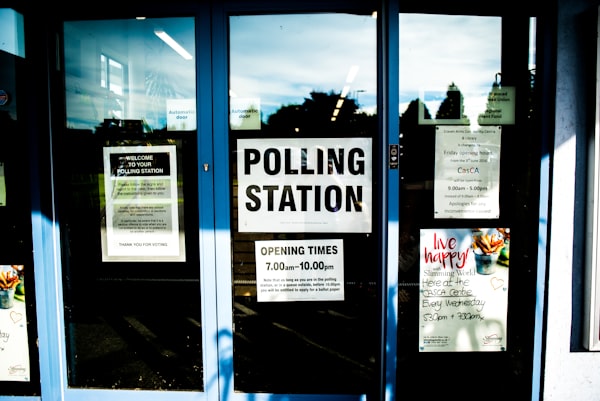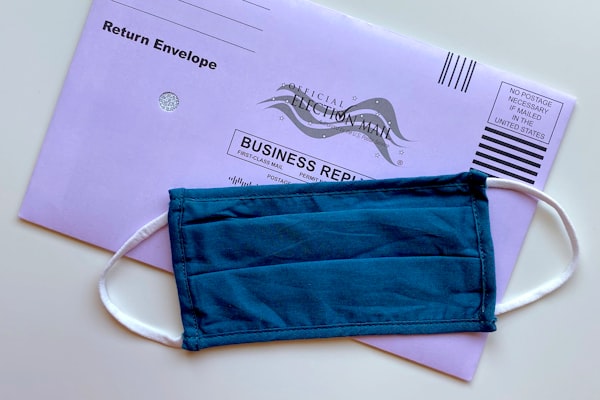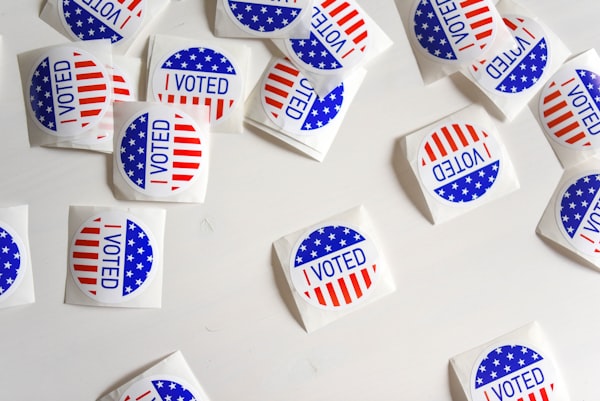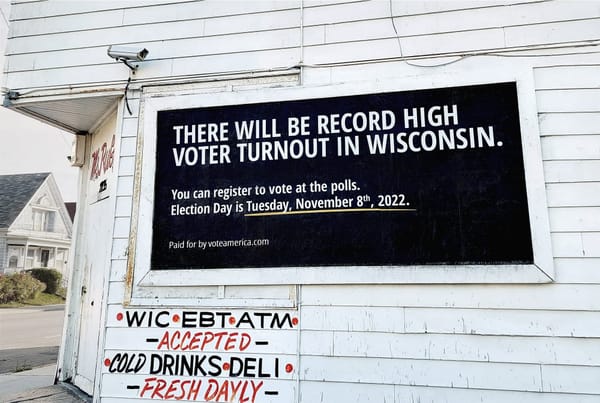CEO Update: 37% of Americans don't know when Election Day is.
About once a week I send an email to the VoteAmerica Insiders list. At the request of many of the recipients, I’ve decided to cross post these emails on online. Feel free to share and to donate. A donate link is at the bottom.
Hey friends.
An October 2016 study conducted by the American Council of Trustees and Alumni (ACTA) revealed a troubling lack of knowledge about basic aspects of elections and governance in the United States. The most astonishing statistic was this one: 37% of Americans overall and 22% of college graduates could not correctly identify when Election Day is held.
I suppose I should be alarmed by this statistic, but I’m actually energized by this. 37% of Americans didn’t know when the election was in 2016, and 41% didn’t vote. If citizens aren’t voting because they don’t know when to vote, we can increase turnout by telling Americans when and where to vote. This may seem like pure conjecture until you remember that this is exactly what my team and I did during the Alabama special election of 2017.
If you missed that one, let me catch you up. The fine folks in Alabama held a special election in December 2017 to replace Jeff Sessions. The only reason to hold an election during an off month of an off year is to purposefully reduce turnout. As noted above, Americans barely participate in regularly scheduled presidential elections. It goes to follow that turnout would plummet during a one-off election held in December of an odd numbered year. Which is why experts predicted low turnout. Experts further predicted especially low Black voter turnout, which actually made sense since both candidates were running programs targeting white voters.
A few weeks before the Alabama election, a funder called me and asked if I thought it was possible for a Democrat to win this race. I assured him it was mathematically possible since 32% of the registered voters in Alabama are black, and these voters support the Democratic candidate 98% of the time. Even the white voters down in Alabama vote Democrat18–23% of the time. So, if one were to increase Black voter turnout while allowing white voter attrition, then yes, it was possible that the Democrat could win this race. It would be close, but it was possible. The donor told me that his “political guy” said that this would cost $20 million dollars. I responded that $20 million meant broadcast TV, and that there was no way in hell that anyone was flipping Alabama using broadcast TV (Fun Fact: 51% of Americans under 50 haven’t watched a single minute of broadcast TV in over a year, so realistically, broadcast TV is an expensive way to reach people who are already going to vote).
The donor asked what I would do in this case. I said that I would stay far away from broadcast TV, and that I would lean into low cost inventory that would allow us to reach every registered Black voter multiple times with a reminder that there was an important senate race happening on December 12, 2017.
By now most of you know how this all turned out. Two individual donors chipped in just under $800,000, and we used this money to run the largest GOTV campaign in Alabama history. We bought every single billboard and transit ad in a majority Black county; we sent multiple waves of peer-to-peer SMS messages; we ran three weeks of radio ads on Pandora and Spotify; and we sent a wave of direct mail to every household with at least one registered Black voter. The message was simple: we simply advertised the date of the election and let folks know that we were expecting record-high turnout.
Record high turnout among the Black voters that we targeted is exactly what this campaign produced. Black voters turned out at levels on par with 2016 levels, white voters stayed home, and a Democrat was swept into office on a sea of Black votes. This is the exact opposite of what DC experts predicted, but it’s very much in line with what any marketing expert would have predicted. If you market voting like a product, and you are relentless about it, you can overcome resistance to voting. Especially if that resistance is caused by simply not knowing when Election Day is.
I’m going someplace with this, promise.
Americans don’t vote because voting is harder in the United States than in any other nation with democratically elected leadership. All 50 states have different rules for participating. The date of the election changes every year. We vote on a workday for no apparent reason whatsoever. Polling places move, often at the last minute. State election websites crash on key voting dates (Pennsylvania and Florida’s online voter registration websites have both crashed during the past 24 hours). Voting laws change repeatedly, sometimes multiple times in the same week. States demand voter ID, and then reject perfectly valid IDs as a way of suppressing votes. Polls close while folks are still in line. Folks are purged from the rolls for being dead even if they are very much alive. Etc.
These are all very real and very complex problems to solve, but it turns out that Americans also don’t vote because they don’t know when to vote. And this is why I am so cheerful as I type this email. Because it is incredibly easy — and cheap — to tell Americans when to vote. (Yes, I’m talking about billboards).
Over the past few years, I have put up just under 3,000 billboards informing people of when to vote. And I don’t just put up a few billboards: I buy every single billboard (and transit ad) in an area and fully saturate the community with a VOTE message that includes the date of the election. Before I purchased a single billboard, I did extensive research on the efficacy of OOH (out of home) advertising as a marketing channel, so I already knew that OOH worked and that the CPM (cost per 1000 views) was cost effective when compared to any other marketing channel. Now I know that OOH also works to produce new votes in a cost effective way. I know this because I’ve been working with Professor Chris Mann and Professor Scott Minkoff to measure the efficacy of billboards as a GOTV medium. Professor Minkoff’s conservative estimate is that the billboards produce net new votes at a cost of $23 per vote, or 43 votes per $1000. 8 votes per $1000 is considered a solid return; 43 votes per $1000 is the electoral equivalent of a fire sale on votes.
The average billboard costs just $2,500 for two weeks, and our past research suggests that two weeks is all we need. Right now we’re raising money to buy billboards in census tracts that are at least 60% POC. We’re also raising money for other out of home (OOH) inventory, such as gas station ads, supermarket ads, and transit ads. The designs will be simple, as per usual, and the ads will also include information about early voting and EDR (election day registration). This inventory is great because people are on foot when they see it, so they have more time to absorb the message. You can check out some rough designs here: https://docs.google.com/presentation/d/1MvriyY_ZWhkcufY-6Y1i5lI6buRHQO9zLJLi8lgK1og/.
These sorts of out of home ads cost about $800 for two full weeks, which is so inexpensive that I would actually like to order all of it tonight, before I go to bed.
Putting it all together, here are some sample budgets:
- Arizona: 120 units, 36 million views, $240,000 dollars.
- Florida: 454 units, 129 million views, $1.5 million dollars
- Georgia: 791 units, 103 million views, $1.3 million dollars
- Michigan: 367 units, 72 million views, $215,000 dollars.
- North Carolina: 638 units, 49 million views, $860,000 dollars.
- Texas: 550 units, 185 million views, $2.2 million dollars.
But we are running out of time to buy inventory. The amount of available inventory has dropped by 50% in the past two weeks in Wisconsin, Pennsylvania, Ohio, and Michigan, and honestly, I’m more than a bit concerned about who is buying it (I haven’t been able to find out yet). The Bradleys, Einhorns, and Kochs like billboards as much as I do, and they specifically like to use them to suppress black and brown voter turnout.
Here’s what a Charles Koch billboard looks like:

Here’s what a VoteAmerica billboard looks like:
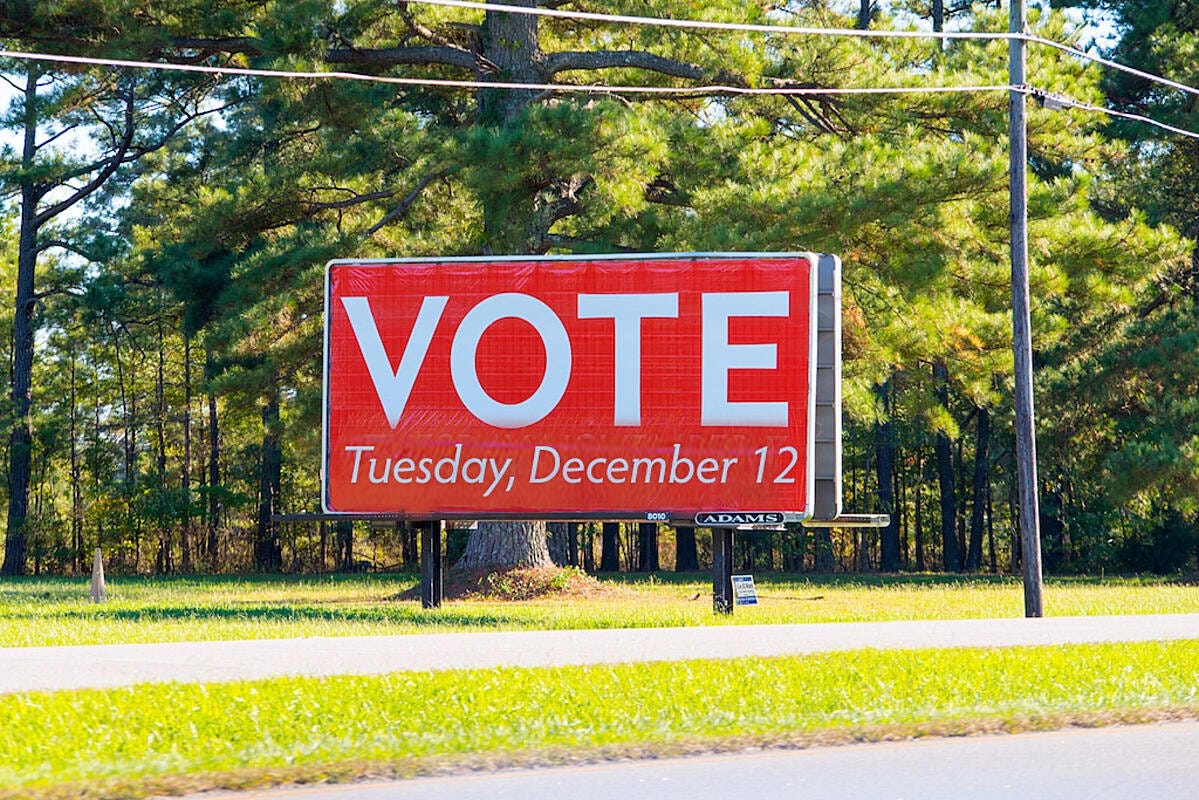
But again, I’m an optimist, and I am confident that we can snap up the inventory and use it to increase voter turnout, while also preventing nefarious actors from using this same exact inventory to suppress turnout.
If you’re ready to make a cost-effective investment in US democracy, that also happens to be tax-deductible, you should give to VoteAmerica. I really, truly, want to start buying the inventory right now because this is a very, very, very good idea.
- You can give online at this link: https://secure.actblue.com/donate/voteamerica-medium
- If you plan to give more than $1000, please email us at finance @voteamerica.com and we'll send you our ACH or wire info.
Thank you,
Debra
